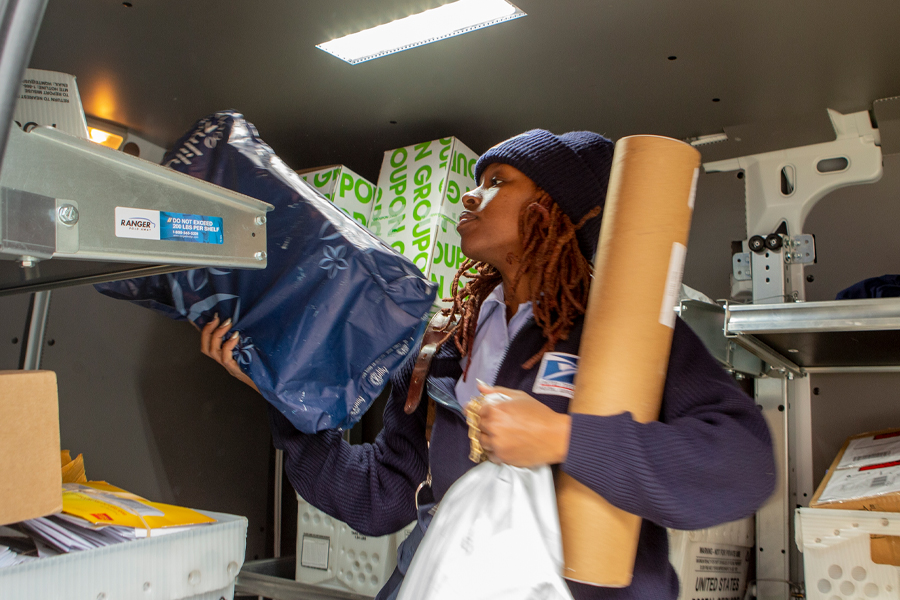If you think the Postal Service is delivering a lot of packages this holiday season, wait until you see what happens next year — and the year after that.
Shoppers are expected to spend $123 billion on online holiday purchases in 2018, up 16.6 percent from one year earlier, according to data from eMarketer. In 2016, online shoppers spent $91.15 billion during the holidays.
This is driving major increases in package volumes for USPS and other shippers.
The Postal Service expects to deliver 900 million packages during the holidays this year, up from about 870 million in 2017 and 750 million two years ago.
A total of 2 billion packages are expected to be handled by USPS and other shippers this holiday season.
The numbers are likely to keep going up for the foreseeable future.
“It is entirely plausible that there will be 4 to 6 billion packages” handled by the Postal Service and other shippers five years from now during the holiday season, according to Brittain Ladd, an online commerce and supply chain analyst.
“Then in 10 years, that number could be between 6 and 8 billion,” he said.
To keep up with the increases, USPS in recent years has invested in new equipment and vehicles and added Sunday package deliveries.
The organization also hires seasonal help, although that can be challenging during a tight labor market.
“You have to be more creative in how you recruit holiday help. We’ve been very successful. Our brand helps us. We have a very trusted brand,” said Kevin McAdams, the Postal Service’s delivery operations vice president.
Surging package volumes also present shippers with logistical challenges, including the need to satisfy customers who want their orders as quickly as possible.
To become more efficient, USPS has introduced methods like dynamic routing, a technique that puts package delivery points in the most efficient, logical order.
“Technology opens up a world of possibilities,” McAdams said. “There’s a tremendous opportunity using technology to facilitate improvements in last-mile delivery.”
The closure of many brick-and-mortar retail businesses will also drive more growth in online shopping in the coming years, especially among consumers in rural areas.
DeeDee Lynch, a Snyder, TX, resident, is hitting the “buy” button on retail sites more often during this holiday season because many chain stores in her area have closed.
“When you live in a metropolitan area, you have so many more choices. But not when you live in a small town,” she said.
